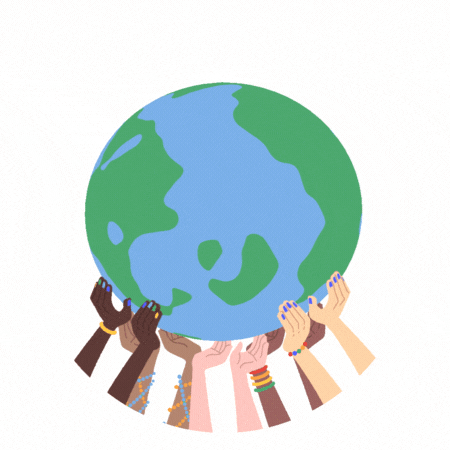CSIRO Megatrends: Your Business's Crystal Ball
CSIRO Megatrends: Your Business's Crystal Ball
If you’re an entrepreneur or business owner, it’s probably one of your common contemplations to think of ways to make your business future-proof. We all want to be prepared for the future and stay laps ahead of our competition. Luckily, there's a useful tool that can help you do just that: the CSIRO megatrends.
What are the CSIRO megatrends?

A set of seven long-term trends that are expected to shape the future of Australia and the world. These trends cover a wide range of topics, including technology, health, energy, and the environment. By understanding these global megatrends, you can gain valuable insights into what the future may hold and how your business can adapt to meet the challenges and opportunities that lie ahead.
The megatrends are constantly evolving and being updated as our world changes. The most recent update was in 2021, so let's take a look at the current megatrends and how they can be used as strategies for your business.

Adapting to climate change: with natural disasters expected to cost the Australian economy almost three times more in 2050 than in 2017, we can expect to be living in a more volatile climate, characterised by unprecedented weather events.

Leaner, cleaner and greener: an increased focus on potential solutions to our resource constraints through synthetic biology, alternative proteins, advanced recycling and the net-zero energy transition. By 2025, renewables are expected to surpass coal as the primary energy source.

The escalating health imperative: the post-pandemic world has exacerbated existing health challenges posed by an ageing population and growing burden of chronic disease. One in five Australians report high or very high levels of psychological distress and there is heightened risk of infectious diseases and pathogens resistant to modern antibiotics. There is now a burning platform to also respond to our health risks and improve health outcomes.

Geopolitical shifts: an uncertain future, characterised by disrupted patterns of global trade, geopolitical tensions and growing investment in defence. While the global economy shrunk by 3.2% in 2020, global military spend reached an all-time high of $2.9 trillion and Australia saw a 13% increase in cybercrime reported relative to the previous year.

Diving into digital: the pandemic-fuelled a boom in digitisation, with teleworking, telehealth, online shopping and digital currencies becoming mainstream. Forty percent of Australians now work remotely on a regular basis and the future demand for digital workers expected to increase by 79% from 2020 to 2025.

Increasingly autonomous: there has been an explosion in artificial intelligence (AI) discoveries and applications across practically all industry sectors over the past several years. Within the science domain the use of AI is rising with the number of peer-reviewed AI publications increasing nearly 12 times from 2000 to 2019.

Unlocking the human dimension: a strong consumer and citizen push for decision makers to consider trust, transparency, fairness and environmental and social governance. While Australia saw a record level increase in public trust in institutions during the pandemic, this ‘trust bubble’ has since burst, with societal trust in business dropping by 7.9% and trust in government declining by 14.8% from 2020-21.
Overall, the megatrends can be a powerful tool for strategic planning. By understanding these trends and how they will shape the future, you can develop new products and services that meet the changing needs of consumers and stay ahead of the curve.
So why not take a closer look at the megatrends and see how they can be used to future-proof your business? How can you use the megatrends as tools for strategic planning? Let's take a look at a couple of examples from some big-name companies.
Disney and Disney+
First up, we have Disney. When the company first learned about the global megatrends, they realised that they needed to shift their focus to digital platforms. They quickly realized that they weren't prepared for the future of streaming services and needed to come up with a new strategy. Using the megatrends as a guide, Disney created Disney+, their top-performing streaming platform that has brought in billions of dollars in revenue. Additionally, they've used the megatrends to design new princesses that reflect the changing world and its diversity, staying relevant in an evolving social landscape.
“Using the megatrends as a guide, Disney created Disney+, their top-performing streaming platform that has brought in billions of dollars in revenue.”
PepsiCo
Another example is the Pepsi Group. They used the megatrends to inform their approach to sustainability. They knew that they needed to become more environmentally friendly, so they focused on two megatrends: leaner, cleaner production and the human dimension of sustainability. They reduced the amount of water required to make their products and made their packaging recyclable and compostable. They also aimed to be an active citizen rather than a pest of each community that they’re in by contributing positively to their environment and communities. This approach not only helps the planet but also attracts customers who are looking for socially responsible companies to support.
“They knew that they needed to become more environmentally friendly, so they focused on two megatrends: leaner, cleaner production and the human dimension of sustainability.”
The megatrends can be a valuable tool for strategic planning. By understanding these trends, you can make informed decisions about the future of your business and stay ahead of the curve. Whether you're planning for new digital platforms, embracing sustainability, or looking to innovate in new ways, the megatrends can help guide you towards success. Who knows, it could be the key to unlocking your business's full potential!
